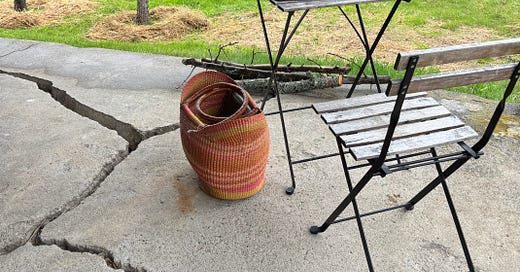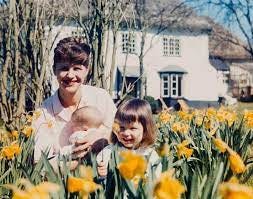In which there’s still time to apply for a writer’s residency this summer at Hewnoaks in Maine! And Sylvia Plath finally makes an appearance…
Welcome back to The Museletter. I’m Kate Moses, and I want you to write with me.
Today the Museletter is coming to you in the gloriously daffodilled, mountain-misted, spring-lamby afterglow of a weeklong Writing Intensive at Craigardan in the Adirondacks of upstate New York. For a week we kept company with a great blue heron and walked the creekside trails, talked literary craft and read to each other in the Apple Barn, ate farm-to-table in the kiln house, and wrote and slept in our cabins under the nightly star pageant.
Time spent like this, not only in full-stop permission to live in your imagination and in the vibrancy of a story that’s flickering into shape like a constellation in your mind—but also in the solidarity, curiosity, and sparking energy of other people working and thinking alongside you—is one of the most inspiriting gifts you can give yourself as an artist. I really do mean inspiriting, as in filling up your spirit. Encouraging, as in giving you courage. And oh boy do we all need courage and the filling up of our spirits right now.
So here’s your chance to fill your spirit and give yourself courage while writing and talking about writing at the edge of a lake mirroring the clouds passing over the White Mountains of western Maine. The extended deadline for the first of two weeklong residencies at Hewnoaks, July 11-18, is this Thursday, May 15! And in the spirit of making artmaking in community more accessible, we’ve discounted the fee by 10%. Details below—and if you have any questions about whether this would be a fitting residency for you & your early-stages writing project, please do get in touch with me.
DEADLINE EXTENDED TO MAY 15! 10% OFF!
HEWNOAKS — BIRDS & MUSES RESIDENCIES
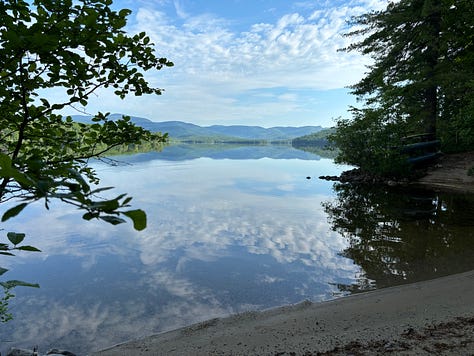
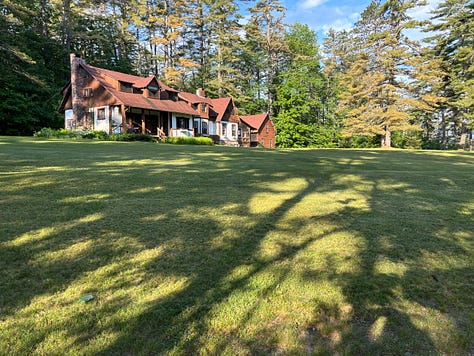
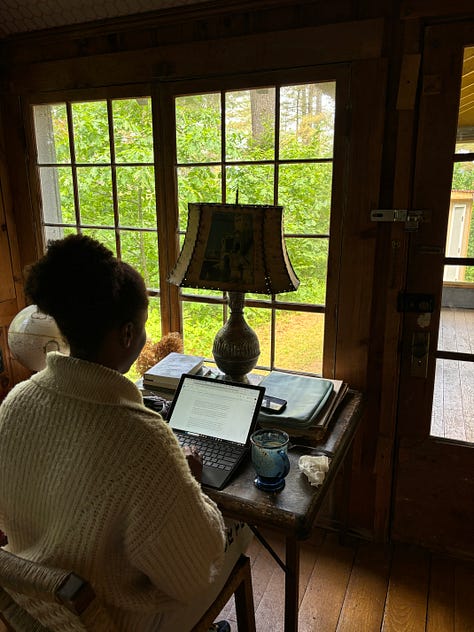
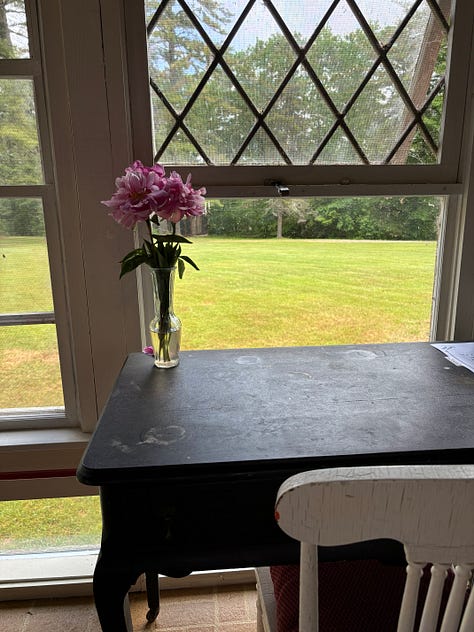

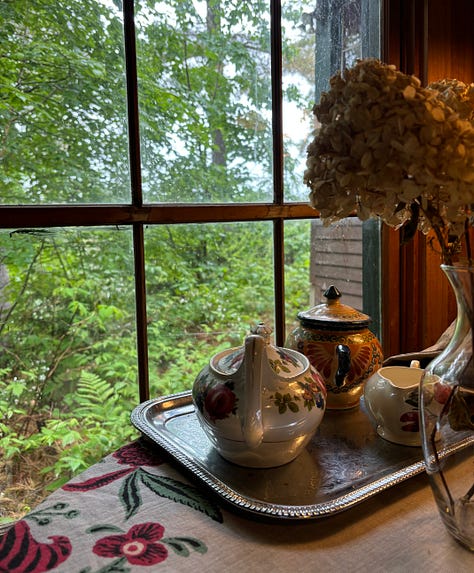
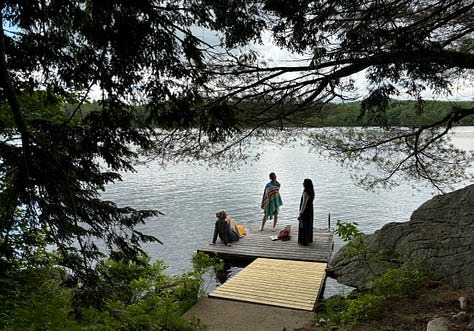
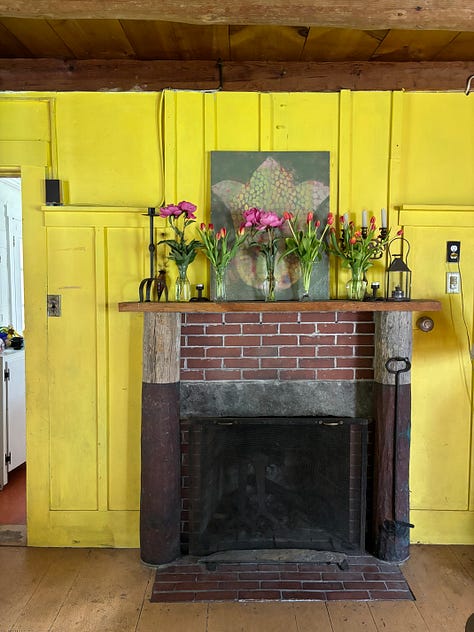

COME WRITE WITH ME IN MAINE!
Two collaborative residencies for women-identified, femme, trans, & nonbinary writers hosted by Hewnoaks, a historic artist residency on Kezar Lake in Western Maine, and led by Kate Moses of Birds & Muses, providing mentorship and practical support to women writers of literary fiction and creative nonfiction book projects.
Writers will not only benefit from Kate’s mentorship, technical craft expertise and professional savvy but also experience the serene atmosphere of Hewnoaks, where inspiration, solitude, and artistic community come together to nurture meaningful creative work.
Both 7-night residencies include group curriculum, individual conferences with Kate, and protected writing time, as well as varied lodging choices on the Hewnoaks campus and a seasonal vegetarian menu for all meals.
Residency I: Generative (Early Stages)
Saturday July 11 - Saturday July 18, 2025 at Hewnoaks, Lovell ME
EXTENDED Deadline for Applications: May 15
10% DISCOUNT FOR ALL ACCEPTED APPLICANTS
FULL DETAILS & APPLICATIONS HERE
For writers with literary projects in early stages of development to take part in daily group sessions to inspire their writing, individualized conferences with Kate to further identify and advance their nascent projects, and protected time to write.
Residency II: Late Draft
Friday September 6 - Friday September 13, 2025 at Hewnoaks, Lovell ME
Deadline for Applications: June 1
FULL DETAILS & APPLICATIONS HERE
For writers with literary projects in late stages of development to take part in daily sessions focused on revising, troubleshooting, and polishing late drafts, and the business of being a writer. Also included are individualized conferences with Kate and protected time to write.
As Promised: The Sylvia Plath Exercise
Maybe it’s fitting that I’m finally sharing my Sylvia Plath writing exercise now that daffodils are at last making their annual appearance here in midcoast Maine. That’s SP above with her children in early spring of 1962, on the hill starred with daffodils outside the Devonshire home, Court Green, where Plath’s marriage to poet Ted Hughes fell apart and ushered in the dawn outpourings of poems that SP rightly predicted would “make her name.” In December of that year, Plath assembled a manuscript of forty poems and a carefully ordered table of contents with a possible forty-first poem, and titled the whole Ariel and Other Poems. At the time she told her estranged husband that the manuscript began with the word “love” and ended with the word “spring,” the poems building an accreting narrative of a woman’s survival and creative rebirth after devastating heartbreak.
That’s not the story or the mythic, self-immolating version of Sylvia Plath that emerged out of Ariel and Other Poems when it was published in 1965, the collection edited and rearranged by Hughes, Plath’s widower and literary executor, after her catastrophic suicide two years earlier. “These poems are playing Russian roulette with six cartridges in the cylinder,” Robert Lowell wrote in his Introduction, “. . . they tell that life, even when disciplined, is simply not worth it.”
Despite his rearranging Ariel into “a somewhat different volume than what she had planned,” Hughes included Plath’s original order for her Ariel in the appendices to her Pulitzer Prize-winning Collected Poems, which he also edited. So though unpublished as she intended it, the Ariel narrative that Plath had built for herself was still in evidence, if you looked for it—and if you found it, you could no longer see Sylvia Plath and her poems in the same way. Which is how I came to write a novel I never anticipated writing, Wintering—about SP’s assembly of the manuscript of Ariel in late December 1962: the story of artistic redemption and a young mother’s new life that Sylvia Plath was willing herself toward in her last courageous but fragile months.
Which brings us to The Exercise:
Early in their marriage, Plath and Hughes operated in a mutually supportive creative partnership. Hughes coached Plath, a chronic sufferer of writer’s block still struggling to “find her voice,” by keeping random subjects for poems on an active list. After choosing (or being assigned) a subject, Plath would spend her writing morning thinking about and reading up on her subject—brainstorming the etymology of words, natural and social histories, collecting her own related memories, any ideas that sparked. This process might take an hour or her whole morning or even a few days, depending on the depth of the subject. Then Plath would “put the subject aside,” letting her conscious mind move on to other things—likely childcare and housekeeping in the afternoons, while Hughes had his turn to write. Meanwhile Plath’s subconscious processed the raw material she’d accumulated, finding connections and resonances among all the bits and pieces. The next morning, alone in her study before the rest of the household awoke, Plath sat down to write.
After I learned of this technique while researching Wintering, I decided to try it out myself as I juggled the narrative SP had built into her Ariel manuscript, the genesis and internal narratives of each of the poems themselves, and the details of Plath’s life—and ended up writing my entire novel with this method of engaging the subconscious to pull everything together. It’s still my favorite writing exercise twenty years later, the one I share first. I can’t tell you how many writers have found it almost magical, a confirmation that what you need as an artist is already within you.
What’s at work here is the sometimes misunderstood power of our subconscious mind. “We are basically professional receptors of gifts given by the subconscious,” George Saunders wrote a couple of years ago in his Substack newsletter,
. In neurological terms our subconscious is the adaptive or cognitive unconscious. The adaptive unconscious processes a vast majority of our waking experiences at a speed our conscious minds can’t keep up with, so we can put our mental energy toward other things that matter to us consciously, where our capacity for attention and introspection is far more limited and thus controlled. Our subconscious is where the everyday stew of otherwise-overwhelming sensory input goes—think of it as where emotions and meaning really live. The subconscious is the place of momentary sensual experience, the home of the stuff of imagination, like daffodil bulbs buried under the soil of a hillside. Getting access to it is the key to creative problem-solving . . . which is in essence the foundation of artmaking.Recently I read in The Marginalian that Maria Popova used virtually this same Sylvia Plath technique to create An Almanac of Birds: 100 Divinations for Uncertain Days. After perusing her favorite nineteenth-century bird books,
Each night before going to sleep, I would let a painted bird call out to me from the yellowed pages, then read the ornithological descriptions of the species, taking down a handful of words and phrases speaking to something on my mind that day. Then, with the slanted reckoning of REM, the unconscious would do its mysterious work in the night. Upon waking, I would reread the ornithological text and a kind of message would come to enflesh the skeleton of the noted words—a divination from the bird, partway between koan and poem. . . . The divinations were telling me what I needed to hear. (A part of us always knows what we need to hear and can always tell us where we need to go. . . .)
So try this:
Pick a time to work on developing your story generally, or a particular aspect of it, when you can be uninterrupted. First, clear your head—take a walk, meditate, listen to instrumental music, or otherwise “turn off” your striving mind and get into a daydreamy state.
Back at your desk, without censoring yourself, write down every possibility you have for your story, new or old. Combine these notes with any other notes or research you’ve done.
When you’ve exhausted your brainstorming, take the time to focus on all of this raw material and go over everything slowly, keeping your mind present for all the information, ideas, and images before you.
Before going to sleep that night, review your notes just before bed, again keeping your mind present.
In the morning, take another walk, exercise, take a shower, rake leaves—something rote and routine that again allows your mind to wander.
Sit down and write. Don’t censor yourself or try to shape anything—just write down whatever comes. Your mind may go straight to your chosen topic or somewhere else—your subconscious knows where you need to go, so follow it. Trust the process of your own imagination.
. . . And let me know how it goes!
My thanks and gratitude to all of you who sharing The Museletter. You can reach out to me here or via email at kate@birdsandmuses.com. You can also find me at birdsandmuses.com. I’d love to hear from you.
oxk
What has saved me from the burning building of my life as a writer, the burning library of my imagination, what has over the last couple of years doused the fire’s destruction and gradually unlocked the home of my self, is love. The feeling, yes. But primarily I mean love as an action. Love as a verb. Love as in building a nest where helplessness and vulnerability and the tender, necessary spirit of art-making, the hard work of doing language and sharing it, find the shelter that makes the risk of flight possible. —Kate Moses, The Museletter

